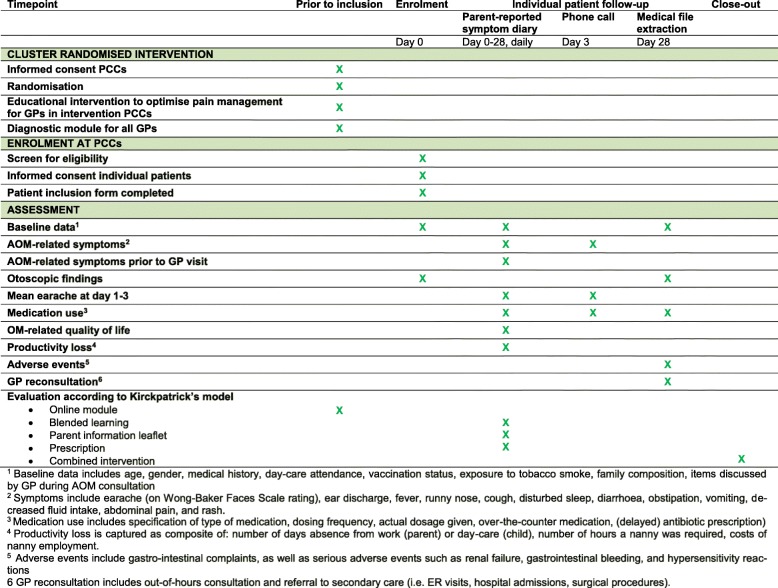Fig. 1.
Overview and schedule of enrolment, data collection, and assessments (SPIRIT Figure). 1Baseline data includes age, gender, medical history, day-care attendance, vaccination status, exposure to tobacco smoke, family composition, and items discussed by general practitioner (GP) during acute otitis media (AOM) consultation. 2Symptoms include earache (on Wong-Baker Faces Scale rating), ear discharge, fever, runny nose, cough, disturbed sleep, diarrhoea, obstipation, vomiting, decreased fluid intake, abdominal pain, and rash. 3Medication use includes specification of type of medication, dosing frequency, actual dosage given, over-the-counter medication, (delayed) antibiotic prescription. 4Productivity loss is captured as composite of number of days absence from work (parent) or day-care (child), number of hours a nanny was required, and costs of nanny employment. 5Adverse events include gastrointestinal complaints, as well as serious adverse events such as renal failure, gastrointestinal bleeding, and hypersensitivity reactions. 6GP re-consultation includes out-of-hours consultation and referral to secondary care (i.e. emergency room visits, hospital admissions, and surgical procedures). PCC primary care centre

